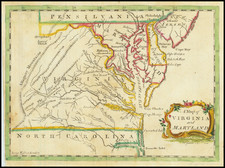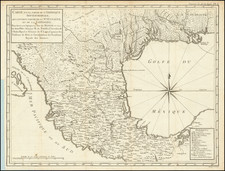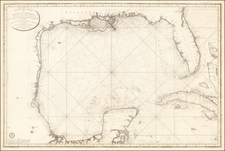Rare example of W.L. Nicholson and A. Lindenkohl's map of the mountain regions of North Carolina and Tennessee,the map used by President Abraham Lincoln during the Civil War to demonstrate to his Generals the wisdom of pursuing an offensive strategy via the Cumberland Gap.
This finely detailed map covering parts of the states of Tennessee, Virginia, North and South Carolina, Georgia, Kentucky and Alabama, showing relief by hachures, drainage, names and boundaries of states, roads, and railroads. A key of authorities begins with the following note.
The mountains and interior valleys of western North Carolina are principally from a map furnished by Prof. Arnold Guyot, the result of his explorations of that region during the summers of 1856, '59 and '60 . . .
In Lincoln, maps, and the invasion of East Tennessee ( www.mappingthenation.com/blog/lincoln-and-the-strategy-of-east-tennessee/ ), Professor Susan Schulten offers a fine overview of the importance of this map in Lincoln's war strategy.
[T]his region posed the particular challenge of making sense of the complex mountain system of the southern Appalachians. To do this in the midst of the war, without access to the terrain itself, the Superintendent of the Coast Survey urgently called upon Arnold Guyot, the nation's leading expert on the Appalachian Mountains. Guyot had spent several summers in the late 1850s exploring the region, compiling detailed records about the geography of the system. He responded to the Superintendent with a lengthy report on the region. . . .
From Guyot's perspective, the mountain region was also unique insofar as it contained a "negative axis" - a valley east of the Cumberland Mountains and west of the Appalachian Mountains. That valley of eastern Tennessee, he argued, had tremendous military value, and he urged the Union army that this was the best path to defeating the rebellion. It was situated in the heart of the South, yet because of its hostile terrain had been left fairly isolated from regions all around it. By occupying that region, the military might control the passes over the mountains to the east, which were connected to several major cities of the South. Finally, the valley of East Tennessee offered a path to the south (Atlanta, but also to the southwest) with no physical obstacles. Braxton Bragg might resist, but there would be no mountain ranges blocking the Army as it moved to capture railroad lines toward the Gulf. In this respect, the geology practically invited a military advance.
Guyot's advice echoed Lincoln's own vision of strategy for Tennessee. As early as 1861, the President had drawn attention to the loyalists of the region south of the Cumberland Gap, and repeatedly stressed the importance of building communication and transportation networks to the loyalists of Tennessee and western North Carolina. Other priorities came first in the first two years of the war, but by early 1863 such a strategy was developing, particularly with the Army of the Cumberland's movement toward Chattanooga.
In September 1863, Lincoln gave his own mounted copy of the map to General Oliver Otis Howard, who had just been sent to aid Rosecrans and the Army of the Cumberland in Chattanooga. Pointing to the Cumberland Gap, Lincoln exclaimed to Howard "They are loyal there, they are loyal!" The detail of the Coast Survey's map of this region must have fascinated Lincoln, and given him the cartographic evidence for what he already knew: that the diversity of the South-its landscape, topography, people, and sentiment-was ripe for exploitation.
The first edition of this map was originally compiled and drawn by Nicholson and the Lindenkohl Brothers in 1863 and revised in 1864 and thereafter. The Coast & Geodetic Survey would later use the map in 1884, with significant revisions.
During the War, the US realized that it was woefully short of good maps of the southern parts of the United States. At the time, the most technically competent map makers were working with the United States Coast Survey. Under the direction of A.D. Bache, the mapmakers, including the Lindenkohl brothers, created a number of detailed maps, which they compiled from the best available government and private sources. This is an example of the fine work done by the USCS and demonstrates the importance of its work in the Union military efforts and strategies.
The map is rare on the market. We locate no examples of any edition of the map in a dealer catalog or at Auction (per AMPR and Americana Exchange) dating back more than 30 years.












![The North Coast of the Gulf of Mexico from St. Marks to Galveston . . . 1844 . . . Additions to 1856, including the Surveys of Comr. Powell, Lt. Simmes & Profr. Coffin, U.S. Navy [and] St. Marks to Galveston. Sheet II. . . . 1845. Additions to 1851 . . . .](https://storage.googleapis.com/raremaps/img/small/89497.jpg)
![[Revolutionary War Plans of New York, Boston, Charleston, Delaware River to Philadelphia & Havana] Various Plans and Draughts of Cities, Towns, Harbours &c . . .](https://storage.googleapis.com/raremaps/img/small/83450.jpg)
